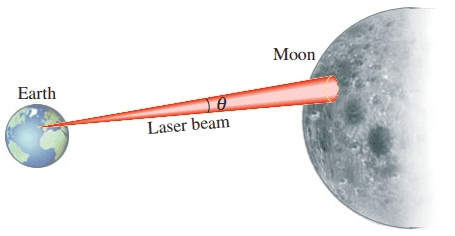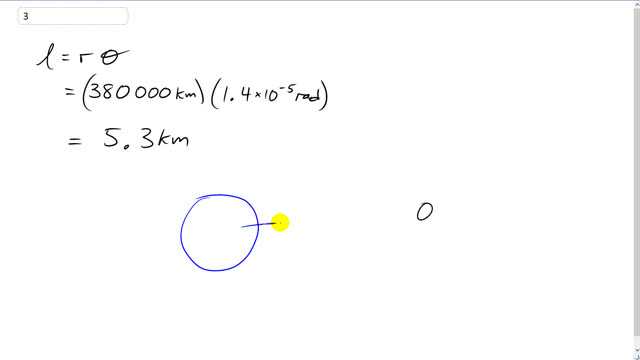
A laser beam is directed at the Moon, 380,000 km from Earth. The beam diverges at an angle (Fig. 8–40) of . What diameter spot will it make on the Moon?


In order to watch this solution you need to have a subscription.
This is Giancoli Answers with Mr. Dychko. With the Earth being here say and the moon being away over here, your line of sight, you know, along the top edge of the laser beam and then the bottom edge of the laser beam; these are both radii in a circle with radius distance to the Earth to the moon of 380,000 kilometers, at least we assume that that's the case and it's a good assumption with such large distances that this radius along here is gonna be the same as the distance from the Earth surface to the moon surface. And then the question is to figure out the diameter of spot of this laser beam and that's gonna be the arc length between these two lines of sight. And so the arc length along the circle is gonna be equal to the radius of the circle times the angle expressed in radians between the two radii and we can say that the arc is gonna be given by radius multiplied by the angle that the arc subtends about the center of the circle which is a fancy way of saying that it's the angle that the arc is opposite to, just this angle here, that's all. So we have 380,000 kilometers times 1.4 times 10 to the minus 5 radians and that gives 5.3 kilometers should be the diameter of this spot produced by the laser on the moon.
wait but isn't the arclength not the diameter itself though? wouldn't you have to set it to 2pi (because you found the arclength of the crater it would be 180 degrees) and then solve for r, and follow up with multiplying it by 2?